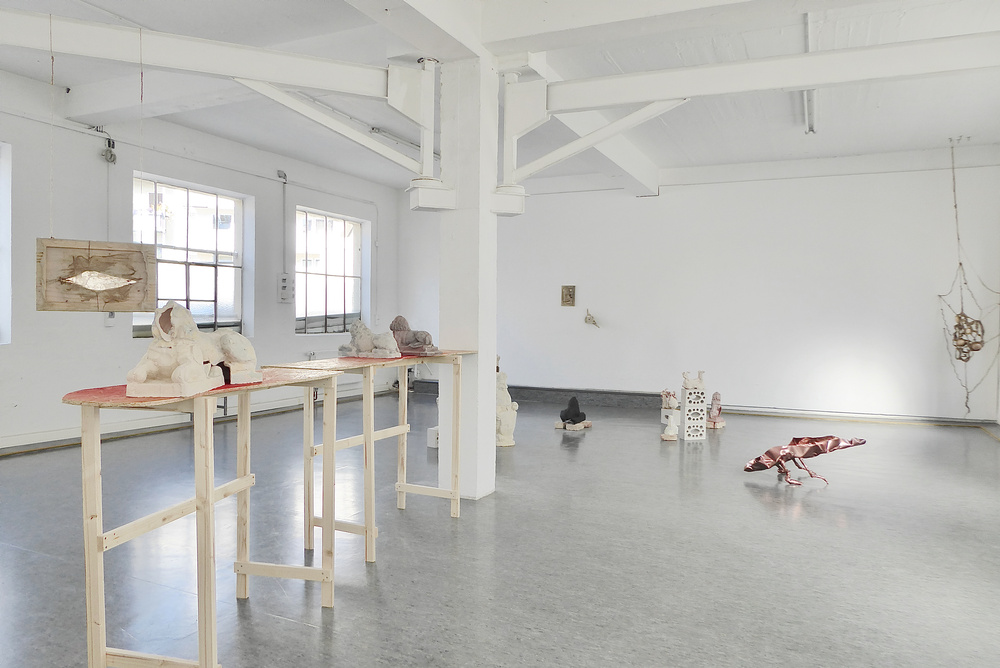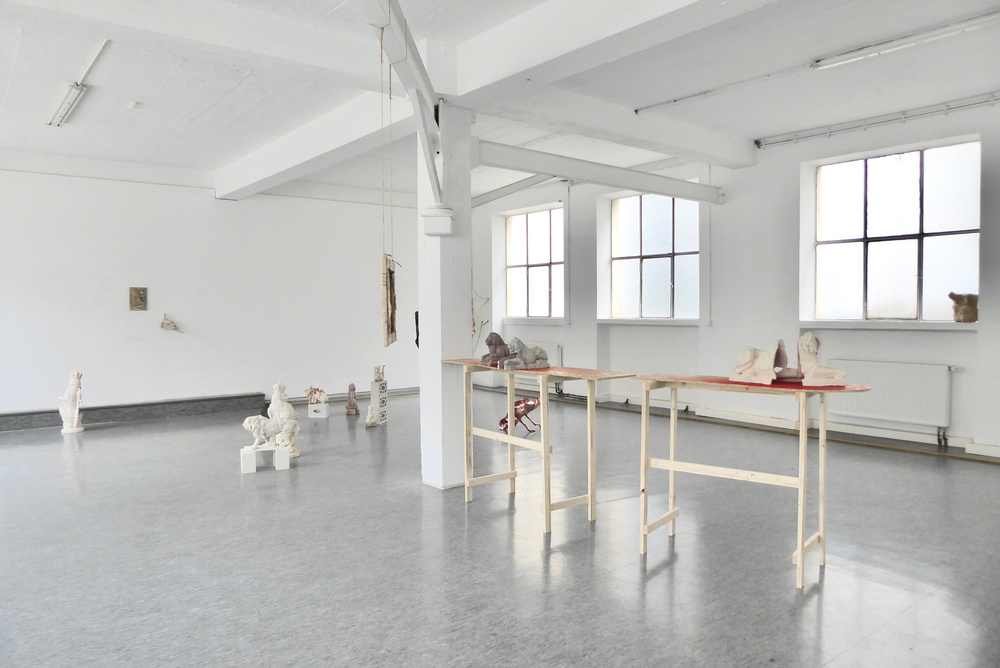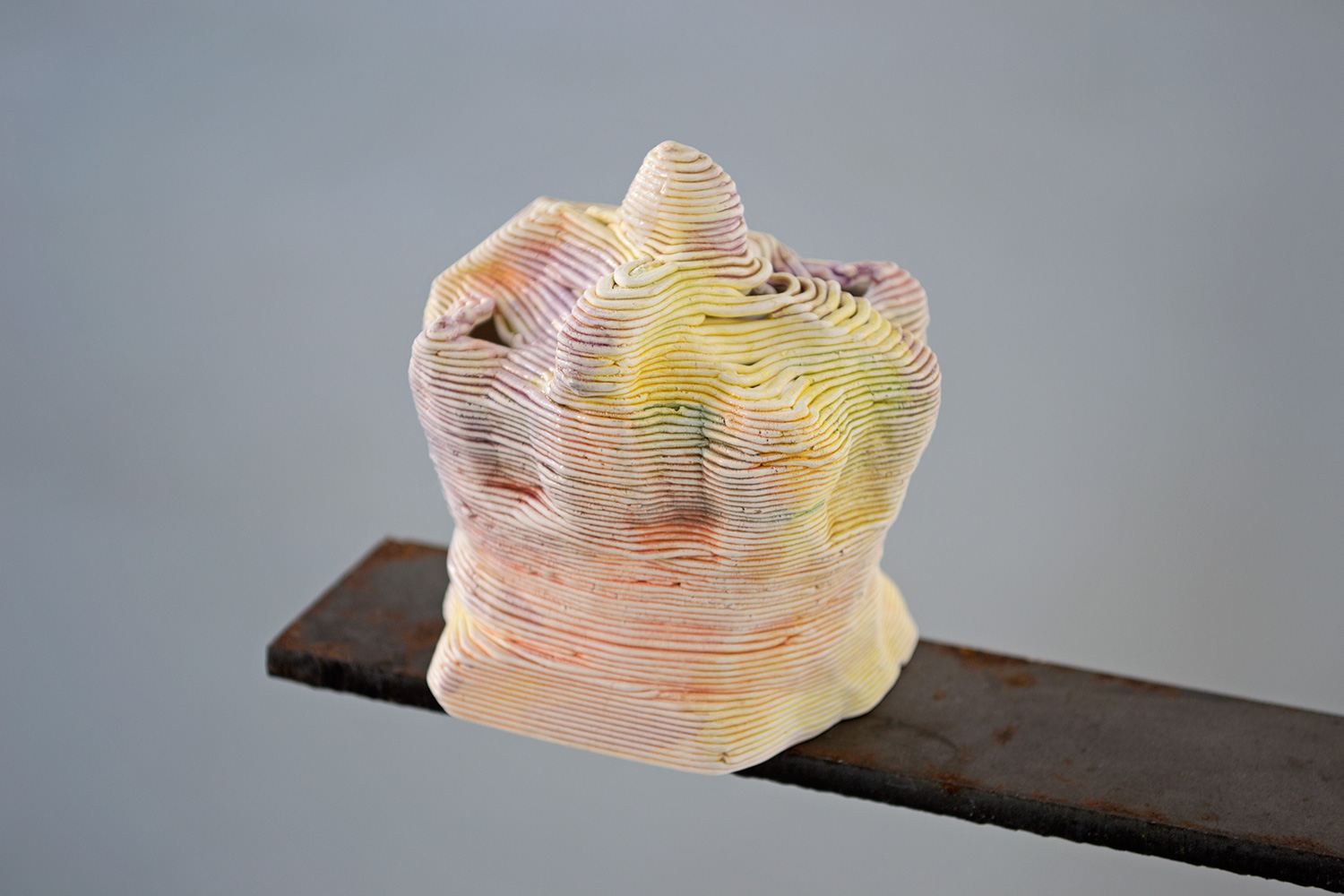PACK

exhibition view ´animals on my mind´ (wall, hanging objects, and copper sculpture by Zuza Piekoszewska)

exhibition view (wall, window, hanging objects, and copper sculpture by Zuza Piekoszewska)

ceramic, pigments; 54 x 22 x 28 cm

ceramic, pigments; 37 x 18 x 23,5, 38,5 x 13,5 x 22 cm


ceramic, pigments; 26 x 28 x 73, 60 x 24 x 38 cm

ceramic, glaze; 31 x 19 x 25 cm
pack, 2022
exhibition animals on my mind with Zuza Piekoszewska
curated by GIG Munich , in collaboration with Łęctwo, Poznań, Poland
Lothringer 13 Halle
Last night I tried to think of the first animal I can remember. My grandmother’s black, shaggy dog perhaps? Or earlier, as my mother would say, the jellyfish that stung me on my wrist. I was only two then. Or earlier still I remember the fish on the beach I would make out of the warm sand. But maybe I am thinking about this wrong, maybe it is not about the actual animals I might or might not remember, but rather that all memories belong to the animal kingdom. Maybe memories are like animals.
First of all, there are the individual memories of different things that happened to us, personal memories like family pets, domesticated. Zuza Piekoszewska shows a small landscape of fields in the early morning mist as described to her by her parents. Elsewhere she remakes a kind of very specific dish cloth her mother used in mid-90s Poland, pastel, striped, homely. Julia Klemm’s lions do not prowl but play around the rubble like kittens. The lions though are a different type of memory. They belong not just to us, but to our culture, much like in the taxonomist’s biological classification, a species belongs to a genus. These animals are ordered along evolutionary lines, significant events of our shared past marking out a historical trajectory. These lions that Julia Klemm gathers, derives from 3D scans of bronze and stone lions dotted around European capitals, traditional symbols of strength, courage and nobility in our Judeo-Christian tradition.
Finally there are the memories of the pack, memories like the swarm of cicadas that emerge all together and so suddenly, after 17 years of underground sleep. History has no place for such memories; this kind of animal is missing from the taxonomist’s classification systems. It is less about individuals, identification and contextualisation and more about how to think the animal as already a population. Memories are never single - there is never the one lion. An animal before it is this or that animal, my animal, yours and ours, is an animal like another, but also different. I mean lions as the same but also as mutants, the repetition of genetic material always harbouring mutation. These memories of the pack are always unknowingly carried with us. I am a product of memories I do not even remember; we are a multiplicity of memories that history cannot contain. The most interesting things happenin between the lines, in shared proximities where the discernibility of pointsdisappears. As Deleuze and Guattari write,
The line-system … of becoming is opposed to the point-system of memory. Becoming is the movement by which the line frees itself from the point, and renders points indiscernible…
(Thousand Plateaus, 294)
Here becoming is an anti-memory. To really learn how to remember animals, we must first forget.
Magdalena Wisniowska, 2022





ceramic, pigments; 60 x 35 x 38 cm
Neue Galerie im Höhmannhaus

crown; porcelain, pigments; 7,3 x 7 x 8 cm
Neue Galerie im Höhmannhaus